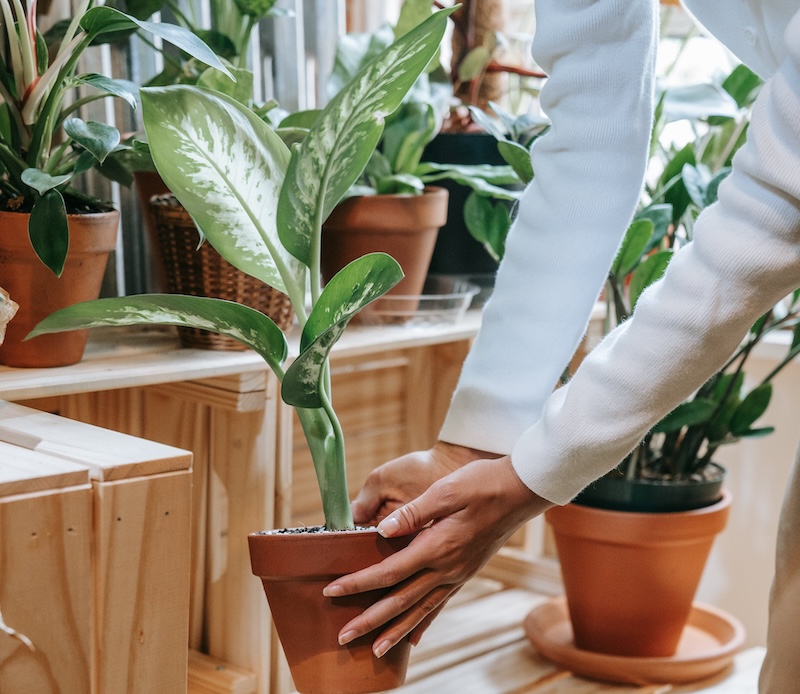The oversized and highly variegated leaves of Dieffenbachia give any outdoor space a lush, tropical feel. Dieffenbachia is native to the tropical climates of Central and South America, where it experiences high humidity and temperatures that rarely fall below 65 degrees Fahrenheit. Moving Dieffenbachia outdoors for the hot days and warm nights of summer often spurs a growth spurt and even a bloom or two by late summer. Of course, if you are lucky enough to garden in USDA zones of 10-12, you can grow Dieffenbachia outdoors year-round and plant it either in a garden bed or a container.

When To Put Dieffenbachia Outside
Nighttime temperatures are the most important factor when deciding when to move houseplants outdoors for the summer. When the nights are consistently above 50 degrees F (10 degrees C), you should start acclimating your Dieffenbachia for growing outdoors. During the course of a week, place your plant outdoors in a very sheltered location where it will have bright shade and protection from winds and seasonal rains.
Dieffenbachia is a lower-story jungle plant that thrives in bright shade or dappled sunlight. Do not put Dieffenbachia in direct sunlight outdoors. This will bleach and scorch the foliage, seriously compromising the growth of the plant. Move your plant into its final growing location if there are no signs of stress.
When To Bring Dieffenbachia Indoors
In the late summer, when the nighttime temperatures begin to fall to the lower 50s (10C), start transitioning your plant for indoor living. Do this well before any threats of frost or freezing temperatures. First, move your plant to an outdoor sheltered location, so that it can be monitored for a couple of days.
Sometimes pests such as spider mites, aphids, or ants attack plants even when they are growing in containers. Quarantine any plants that show signs of leaf damage, webbing in the crooks of stems, or unexplained stickiness on the foliage. Treat a low-level infestation by spraying the plant with an insecticidal soap spray. If the temperatures are dropping quickly and your plant still needs quarantine time, set up an area indoors, far away from other houseplants. Move the plant to its permanent location when it appears healthy and pest-free.

Caring For Dieffenbachia Outdoors
Dieffenbachia are great for brightening up shady spots outdoors. A covered porch or shady entryway is ideal for Dieffenbachia. The plants can be left in their indoor pots but may need to be repotted toward the end of summer.
Dieffenbachia combines well with other shady plants such as fuchsia, ferns, and coleus in a mixed seasonal planter. Place the planter in a sheltered location to protect the plants from heavy rains, wind, or hail. Fertilize the plants every 2-3 weeks from April to September. Use bricks or pot feet to elevate the pot and aid in drainage. Do not use saucers or cache pots outdoors as they can fill with water and expose the roots to standing water.
The frequency of watering may need to be adjusted in humid climates. High humidity levels help the soil retain moisture longer and reduce the need for watering. Watering shade-loving plants once a week, even outdoors, is often plenty if daytime temperatures are between 65-75 F (18-23 C). Potted plants in warmer temperatures will require watering more often.
 |
Author Robbin Small - Published 11-30-2023 |
